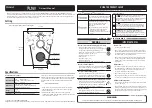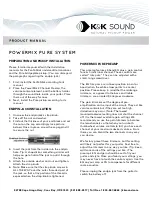
V2.1 | 11-2022 Installation and Commisioning of Tankspion-IoT devices
3
Mounting of Level Probe
• For tanks welded within cellarage and underground tanks, the probe is
installed using the supplied tank screw connection with cable passage.
• For cellar tanks, disassemble the previously used fuel gauge with float to
allow the use of the screw-in opening.
• For underground tanks, there is usually a free screw-in opening that is
closed with a removable dummy plug.
• If there is no other suitable possibility, the level measurement probe can
also be installed in the bearing pipe, if present. In this case, we recommend
screwing a T-joint plus nipple piece onto the bearing tube head (available
as an accessory). The probe cable can be led out of the side of the T-joint.
The occasional inspection bearing thus remains possible parallel to the
probe cable.
Installation:
• Free the screw-in opening of the tank and, if necessary, remove the
existing dummy plugs.
• If necessary, slide the tank screwing with reducer over the probe cable and
insert the measuring probe into the tank.
• Screw in the tank fitting with PTFE sealing tape.
• Allow the probe to fully sink into the tank until the probe head makes
contact with the bottom. The probe may preferably also be positioned lying
on the tank bottom.
• Then fix the cable by tightening the cable screw connection.
• Electrical calibration of the tank measuring probe to the tank is not
necessary.
Connection of the Probe Line:
Probe signal:
Low voltage, 4 - 20 mA
Connection:
2 wire probe cable with
black at terminal 5 Input (-)
and red at terminal 4 (+ 8 - 24 V)
Cable Screw Connection:
• Hand-tighten the PG cable screw
connection and use a tool to tighten it
by one more turn.
Pressure Compensation via probe cable:
• A pressure compensation element is
integrated in the PG screw connection of
the device housing. Through this, the relative pressure probe receives the
atmospheric reference pressure.


































